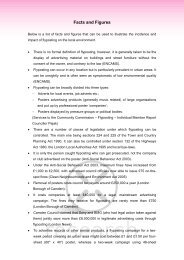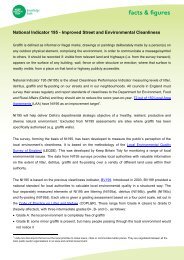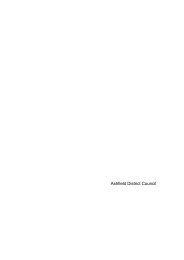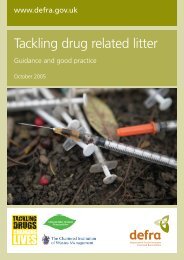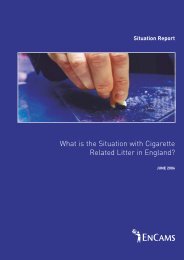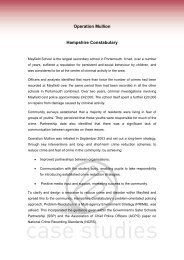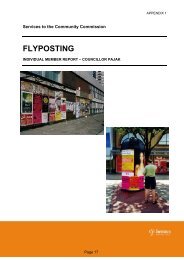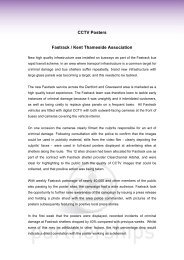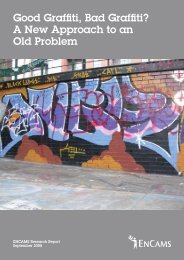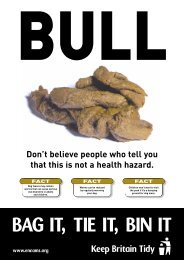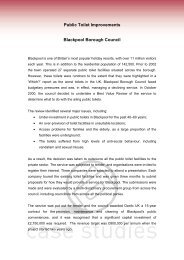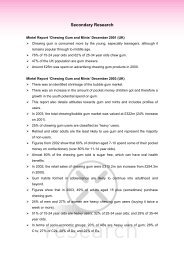a guide to improving your local environment - Keep Britain Tidy
a guide to improving your local environment - Keep Britain Tidy
a guide to improving your local environment - Keep Britain Tidy
Create successful ePaper yourself
Turn your PDF publications into a flip-book with our unique Google optimized e-Paper software.
What is the best way <strong>to</strong> clean up after a dog<br />
The best way is <strong>to</strong> use a doggy bag, or a carrier bag, <strong>to</strong><br />
pick up the faeces. Ideally this should then be placed in a<br />
designated dog bin. If this is not possible, the bag should<br />
be taken home and placed in an outside bin, or as a last<br />
resort, the faeces should be double wrapped and put in a<br />
normal litter bin. Poop scoops can also be used and are<br />
available from most pet s<strong>to</strong>res.<br />
www.encams.org<br />
What about other animals<br />
Local authorities may have powers under Part III of the<br />
Environmental Protection Act 1990 <strong>to</strong> tackle the problem<br />
of fouling by animals other than dogs (such as cats or<br />
horses). They can take action against 'any animal kept in<br />
such a place or a manner as <strong>to</strong> be prejudicial <strong>to</strong> health or<br />
nuisance'. However, it is for a <strong>local</strong> authority's<br />
Environmental Health Officer <strong>to</strong> decide whether there is a<br />
'Statu<strong>to</strong>ry Nuisance' occurring in a particular situation. If<br />
the authority decides that this is the case it must serve<br />
an Abatement Notice on the person responsible or the<br />
owner or occupier of the premises. Failure <strong>to</strong> comply with<br />
an Abatement Notice without reasonable cause may<br />
result in substantial fines.<br />
DOG FOULING<br />
After dogs, the most common complaint is levelled at<br />
cats (although this is relatively rare). There is not<br />
sufficient evidence of widespread nuisance from cats <strong>to</strong><br />
suggest that special legislative controls are necessary.<br />
Risks associated with cat fouling can usually be<br />
controlled <strong>local</strong>ly. Cats can be deterred from leaving<br />
faeces in gardens through the use of 'pepper dust' or by<br />
blocking off of favourite cat-entry routes (e.g. under the<br />
gate) with netting.<br />
ENCAMS work on dog fouling<br />
ENCAMS research shows that approximately 226,000<br />
members of the public complain <strong>to</strong> their <strong>local</strong> council<br />
about dog fouling each year. Because of this ENCAMS<br />
decided <strong>to</strong> focus one of its campaigns for 2002/2003 on<br />
trying <strong>to</strong> combat the problem of dog fouling. The aim of<br />
the campaign was <strong>to</strong> change the behaviour of<br />
irresponsible dog owners, and reduce dog fouling by 20%.<br />
23



